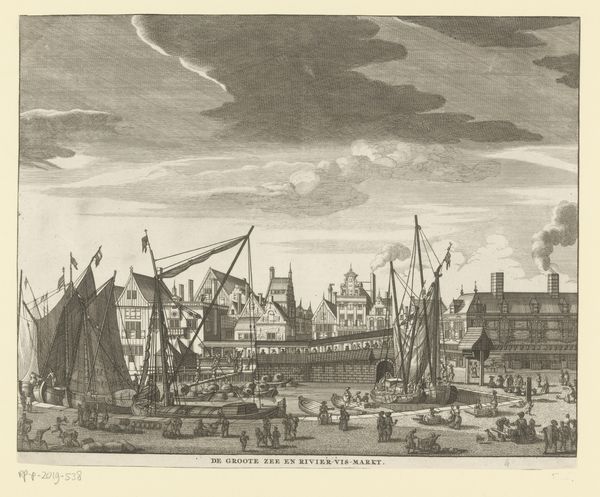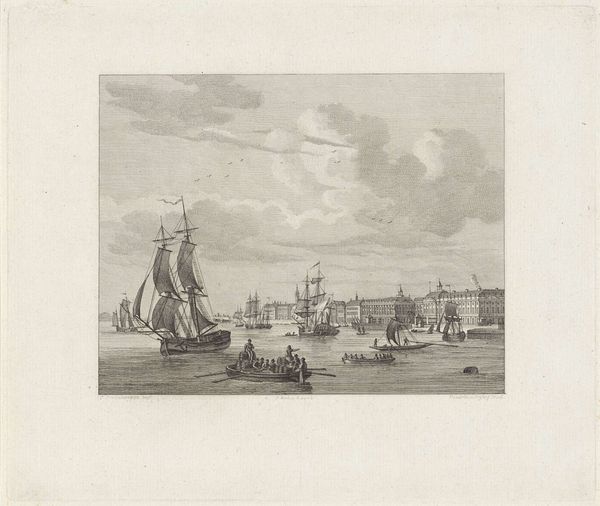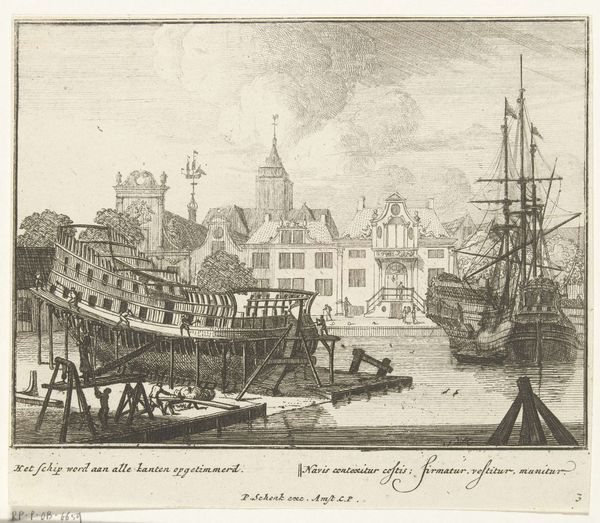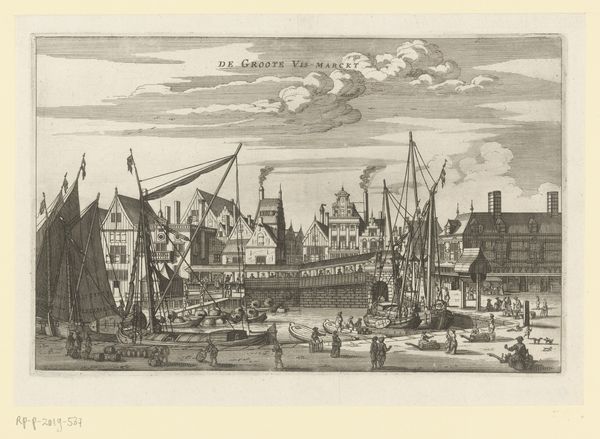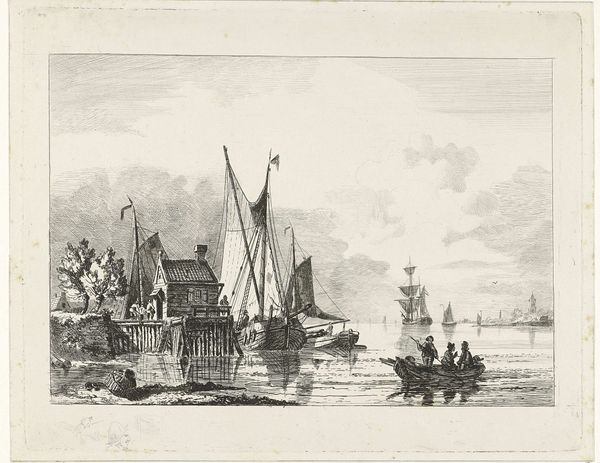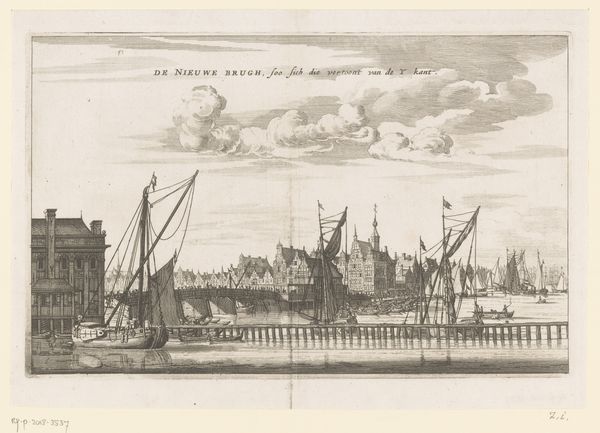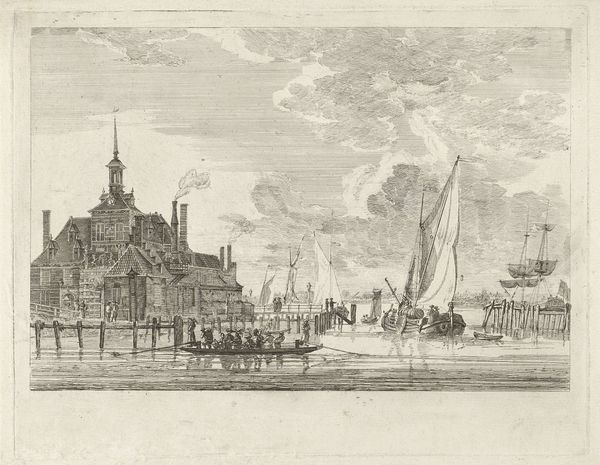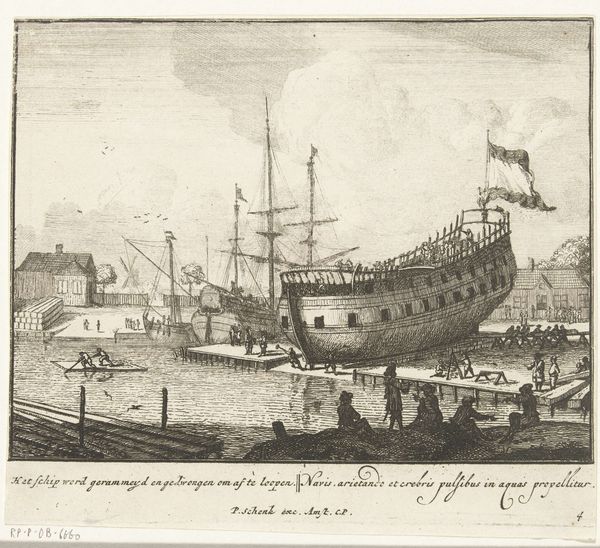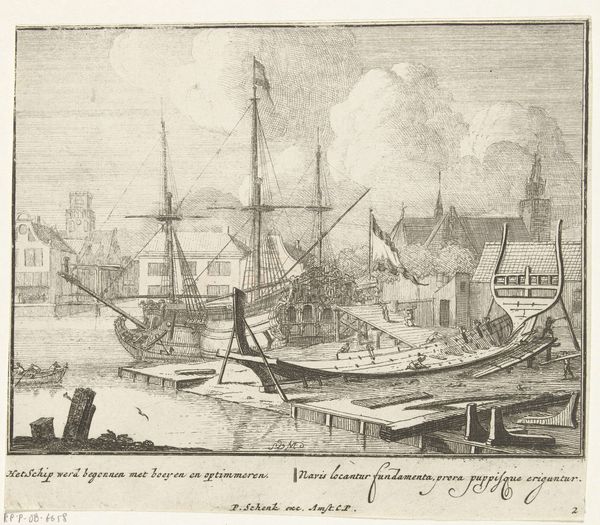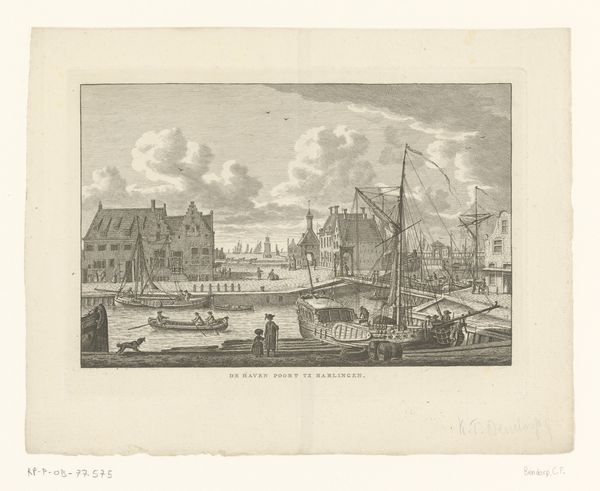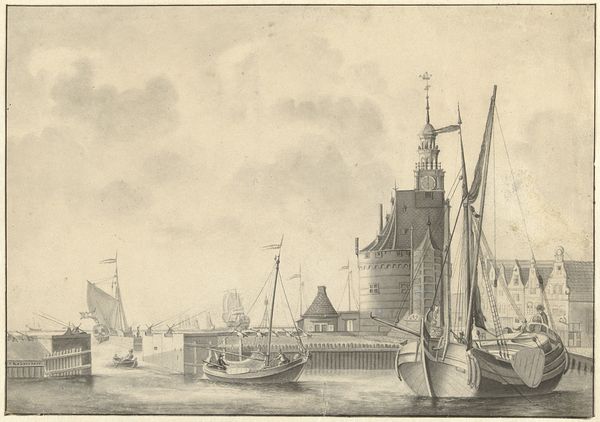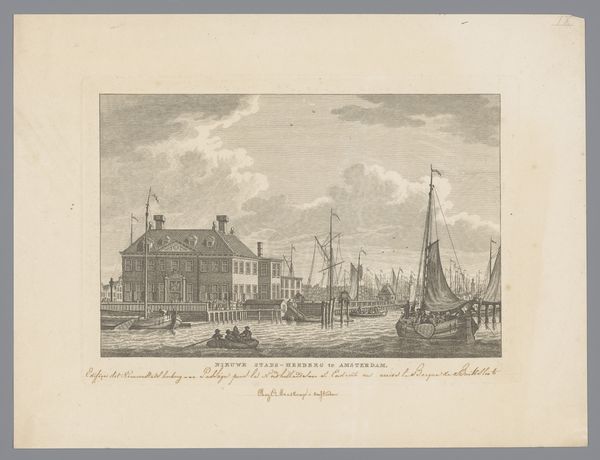
print, engraving
#
16_19th-century
#
dutch-golden-age
# print
#
landscape
#
romanticism
#
19th century
#
cityscape
#
engraving
#
realism
Dimensions: height 390 mm, width 486 mm
Copyright: Rijks Museum: Open Domain
Curator: Here we have Cornelis Kimmel's "Departure of the Volunteer Militia of Middelburg, 1830," an engraving from 1831. What's your initial reaction to this piece? Editor: Well, it's monochromatic, but incredibly detailed! The artist really captured the bustle of the scene; I can almost hear the shouts and the creaking of the boats. There's a sense of dynamic energy despite the static medium. Curator: That energy really does capture a key moment. The Dutch Volunteer Militia, or schutterij, played an important role during periods of unrest and national mobilization. This print commemorates their departure amidst the backdrop of political tensions of the time. We must think about the socio-political dimensions of Dutch society at the time, grappling with national identity and defense in a changing Europe. Editor: Yes, it speaks to a civic moment, a real event depicted, but if we just consider the visual elements for a moment; notice how Kimmel has used the contrast between the dark vessel packed with militia members and the lighter tones of the buildings to direct our gaze, with the ship as the anchoring form. Curator: Precisely, but that ship, it symbolizes more than just a form; it's a vehicle, both literally and figuratively, for a political message. Its overcrowded nature may also express concerns about the militia’s preparedness or even anxieties surrounding compulsory service. We must also analyze Kimmel’s decisions regarding the framing of the narrative itself. Who gets centered, and what gets left out of the frame, are also choices we can dissect from sociopolitical perspectives. Editor: From a formal perspective, you can't ignore that the large ship further back acts like a visual echo, or backdrop. That's where you feel this tension or uncertainty rising. Plus, the smokestack's plume is a key compositional element—a strong vertical accent bisecting the scene! Curator: And doesn't that plume visually connect with the cloudscapes above, blurring lines between human action and fate or destiny? The very deliberate arrangement reminds us how historical art operates—constructing narratives. Editor: Right, but isn't the narrative conveyed so eloquently because the balance between all the elements on the print is what lends so much interest, while the tonality sets a somewhat grim tone. There's a somber feel about their departure. Curator: Understanding these layers of meanings provides insight into both art historical interpretations, but also what it can tell us about 19th-century Dutch nationalism and civic participation, the era’s anxieties around it, or pride and mobilization. Editor: An interesting tension indeed. I will have to reflect upon it further myself!
Comments
No comments
Be the first to comment and join the conversation on the ultimate creative platform.
